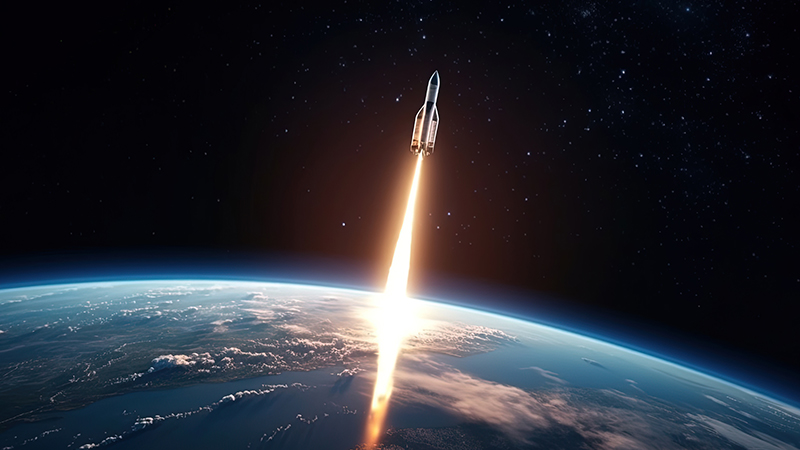

The last few years have been massive for the space industry. From the privatisation of launch vehicles to a new deep space telescope and beyond, we haven’t been short of hard-hitting headlines.
Better yet, this isn’t set to change anytime soon. The space industry is projected to grow 41% in the next five years, and with the UK’s recent investment in startups and NASA’s Artemis mission, there’s plenty to talk about.
These are just some of the many exciting trends we’ll see in the next few years. Below, we’ll cover other predictions that will likely be behind this massive growth period.
Where better to start than with the idea of sustainable rocket fuel? Sustainability is a hot topic in most engineering circles, and space is no different. Considering we’ve made great strides towards reusable launch vehicles, it makes sense to try and power them with more sustainable fuel.
Of course, there are some difficulties unique to launching rockets that aren’t faced by other vehicles. One of the most promising routes being explored is the use of biofuels, provided they can be made with a high enough energy density. Another option is recycled kerosene, such as that produced by Skyora. Its Ecosene is made from plastic waste, and the idea holds a lot of potential for the space industry.
Helpfully, the next predicted trend could play a role in developing sustainable fuels. Like almost every other industry on the planet, space will see generative AI play an increasing role. It goes well beyond the kind of generative AI many of us are familiar with in our everyday lives, of course.
In the space industry, generative AI will play a vital role in designing and producing innovative components for launch vehicles and satellites. In fact, NASA has already tested the concept to great effect. AI was used to assist with designing new parts; it managed to produce up to 40 designs an hour based on an initial brief and feedback. Considering how long this might take a human, this is a massive step forward.
We could similarly see it play a role in the design, manufacture, and purpose of geosynchronous Earth orbit (GEO) satellites – another trend we will see increase over the coming years. Although GEO satellites themselves aren’t new, the increase in reusable launch vehicles will inevitably fuel a boom in their use.
It’s likely that GEO satellites will play a vital role in the future of communication networks, including 5G and probably 6G. We will also see their use in research, data sharing, and Earth observation. As such, they will be important tools for shaping areas such as climate science and terrestrial sustainability efforts. Through the use of 3D printing and shared launch vehicles, the investment cost in GEO satellites will hopefully be far more achievable for future startups.
The next five years promise to be massive for the space sector. We’ve seen some interesting developments in the first four years of the 2020s, and it appears this will only continue for the rest of the decade. The predicted massive growth is most likely explained by the trickle-down effect of available materials and reusable components. But whatever its reason, the global boom we’ll see will be incredibly exciting.

